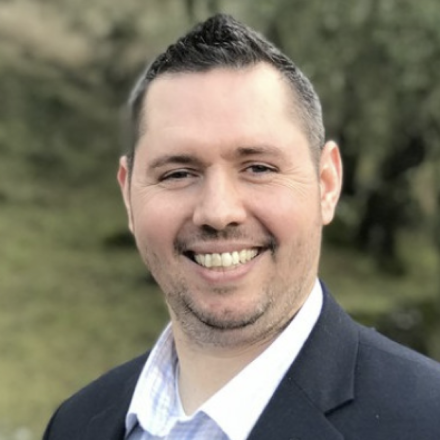HashiCorp Products Used
 Customer Story
Customer Story
Modernizing legacy healthcare technology
California’s Department of Health Care Services partners with HashiCorp to accelerate technology modernization and bring operations into the cloud era.
- Largest SLED organization in the United States
- Reduced time required to provision new environments from weeks to hours
- Implemented infrastructure, enabling apps to reach production 70% faster than before
- Built foundation for future support of 200 applications with Terraform Cloud
- Services 50 downstream application developers
- Improved service availability and delivery timelines
California’s Department of Health Care Services (DHCS) is the backbone of California’s healthcare safety net, helping millions of low-income and disabled Californians every day. As the largest healthcare purchaser in the state, providing Medi-Cal coverage and behavioral health care to millions of Californians, DHCS takes its organizational purpose to provide equitable access to quality healthcare seriously, leading to a healthy California for all.
The California Department of Health Care Services is a large and complex organization with many different systems and applications, and our goal was to create a unified and streamlined infrastructure that would allow us to deliver services more effectively to members.
Jeff Garrett, Section Chief of Factory, California Department of Health Care Services
As the largest SLED (state, local, and education) organization in the United States, the Department of Health Care Services (DHCS) is considered one of the most technologically advanced teams in California state government.
The Department’s Section Chief of Factory, Jeff Garrett, has an important job overseeing the team responsible for DHCS’s internal development platform, which includes infrastructure, containers, pipelines, observability, and development processes. When he first assumed his role, he faced legacy technology stacks, including mainframe systems, which made it difficult to modernize the Department’s applications and infrastructure and bring it current with government mandates and citizen expectations.
“These legacy technology tools lacked the scalability we needed to support an increased demand for services. Complexity with managing and deploying infrastructure also created significant delays in delivering new services and updating existing ones, with change approvals and implementations often taking months to complete,” Garrett says.
The sheer volume of internal and contractor development — all done on different technology platforms and coming from developers with varying degrees of resistance to change — required support that added more layers of complexity and made eliminating shadow IT projects through a common infrastructure platform a top priority, but a tough one to achieve.
"DHCS is a large, complex organization with many different systems and applications underpinning programs that provide critical services to millions of Californians,” Garrett says. “Our goal was to create a unified, streamlined, and secure infrastructure that would allow us to simplify our operations and deliver services more effectively to our members."
Challenges

Traditional datacenter and legacy technology infrastructure lacked the scalability required to support the increasing demand for DHCS services resulting from an increase in Medi-Cal enrollment

Governance concerns stemming from gaps in infrastructure security and compliance

Difficulty managing and deploying existing infrastructure, which led to delays in the deployment of new services and updates to existing ones

Lack of a common infrastructure platform to manage fungible government IT policies in a repeatable, automated fashion

Month-long lead times for change approvals and even longer implementation periods led to long delays in responding to internal and external client requests
Why HashiCorp
Using Terraform has allowed us to standardize our infrastructure and reduce the time and effort required to deploy new resources. It has also given us greater visibility and control over our infrastructure, which has improved our ability to troubleshoot issues and quickly respond to changes.
Jeff Garrett, Section Chief of Factory, California Department of Health Care Services
Prescribing a platform as a product solution
Garrett and his platform engineering team envisioned running their platform as a product, creating repeatable processes to facilitate daily operations and simplifying handling infrastructure changes on the fly.
They sought out a more efficient infrastructure management solution that enabled developer self-service, was easy to use, and was cloud-agnostic to enable future expansion into other environments — a key barrier to adoption within the Department’s infrastructure and executive teams over time.
DHCS needed to find the best technical solution, one capable of meeting its stringent security, governance, and compliance responsibilities. After evaluating several options, DHCS chose HashiCorp Terraform Cloud to bring its disparate infrastructures onto a common platform and replace one-off IT solution environments with one elegant, secure, automated environment.
DHCS uses Terraform Cloud to modernize its legacy applications and create a sustainable platform that evolves over time. With new capabilities, DHCS can now effectively secure its infrastructure and improve how it manages and deploys services. The automation, security, scalability, and collaboration gained with Terraform have helped DHCS’s platform engineering team boost efficiency, productivity, and agility, ultimately helping DHCS achieve its mission of protecting and improving the health of Californians.
“With Terraform, everything is standardized, repeatable, and highly visible so we can rapidly implement new infrastructure in a fraction of the time and effort as before,” Garrett explains.
Terraform’s simple syntax makes it easy for Garrett’s team to create reusable code modules and dynamically provision infrastructure on demand. The immutable and dynamic infrastructure is kept in-state, helping to create a digital audit trail that makes root-cause analysis of errors or breaks easy.
This system of record enables agile change management and the ability to create repeatable processes for maximum efficiency. Because of its built-in developer ecosystem and seamless integration with Snyk, it also helps limit security risks by making sure configurations have been reviewed and tested before they’re published for others in the Department to use.
"HashiCorp tools allow us to standardize our infrastructure and reduce the time and effort required to deploy new resources,” Garrett explains. “It gives us greater visibility and control over our infrastructure, which makes it easier and quicker to troubleshoot issues and respond to changes almost instantly before they become critical errors that break something downstream."
Moving into maturity and keeping fit
With HashiCorp, the DHCS agile platform engineering team can now modernize legacy applications, with a long-term goal of supporting more than 200 applications across the Department once legacy apps are fully migrated. Garrett was previously involved in the daily minutiae of his team’s work but is now less hands-on with day-to-day tasks and more focused on achieving the Department’s overall vision.
“Changes that used to take a month to deploy now take a few hours with Terraform. This has enabled our team to implement stable and scalable infrastructure that helps applications reach production up to 70% faster and provides transparency into each activity to accelerate troubleshooting, so we’re able to do more good work in less time, with complete control,” he says.
Garrett also believes that HashiCorp solutions make it easier to continue pushing DHCS forward while also improving its regulatory compliance and overall platform reliability by putting foundational operations on autopilot.
“Terraform has greatly improved our communication, collaboration, and productivity,” he says. “We’ve been able to shrink our tech footprint while improving service availability and delivery timelines. We’re moving in the right direction, and we’re looking forward to continuing our modernization across the Department and expanding our HashiCorp relationship to incorporate Vault as part of our solution in the next year.”
Outcomes

Developed modernized infrastructure to support as many as 200 applications in the future by replacing diverse legacy technology tools with a single platform

Automated the provisioning of resources and reduced the time and effort required to deploy and manage infrastructure by as much as 70%

Established a digital audit trail for faster troubleshooting and downtime prevention

Consolidated IT footprint for simpler operations and better cost management
Solution
California's Department of Health Care Services (DHCS) uses Terraform Cloud to modernize its legacy applications and create a sustainable platform that evolves over time. With new capabilities, DHCS can now effectively secure its infrastructure and improve how it manages and deploys services. The automation, security, scalability, and collaboration gained with Terraform has helped DHCS’s platform engineering team boost efficiency, productivity, and agility, ultimately helping DHCS achieve its mission of protecting and improving the health of Californians.
DHCS Partner

Jeff Garrett Section Chief of Factory California Department of Health Care Services
Jeff Garrett is a resourceful and effective platform engineering leader with more than 10 years of experience designing and implementing globally available SaaS services with a strong customer focus. He has led initiatives to implement Kubernetes, serverless, and cloud computing while reducing costs by 50%, and has achieved 99.99%+ uptime and reduced customer complaints by more than 80%. At DHCS, Jeff is responsible for the overall vision and modernization of the technology stack, creating a sustainable platform that is evolving over time.
